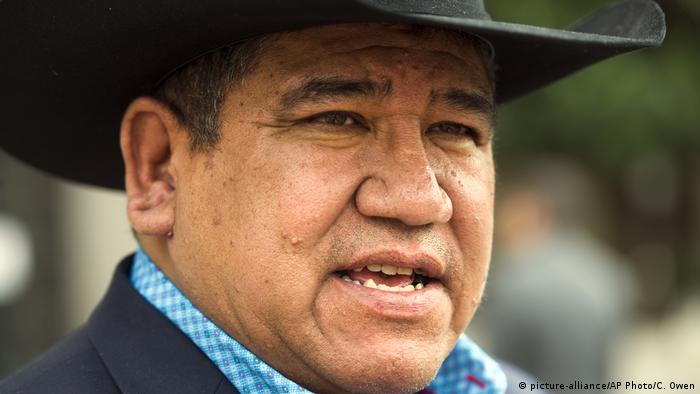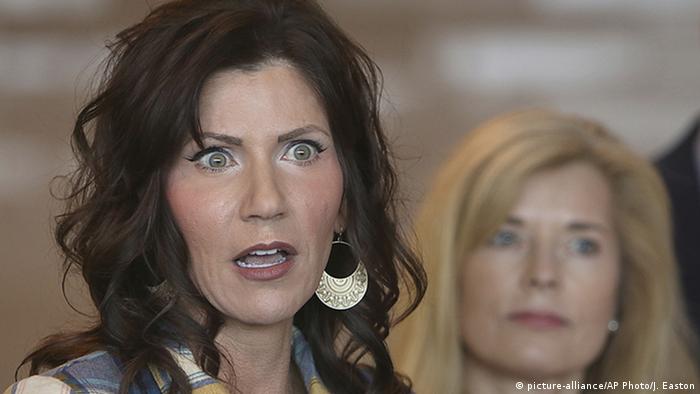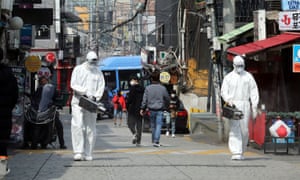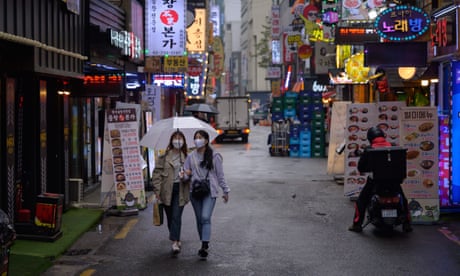Meet the woman who spearheaded California’s recent back-to-work protests
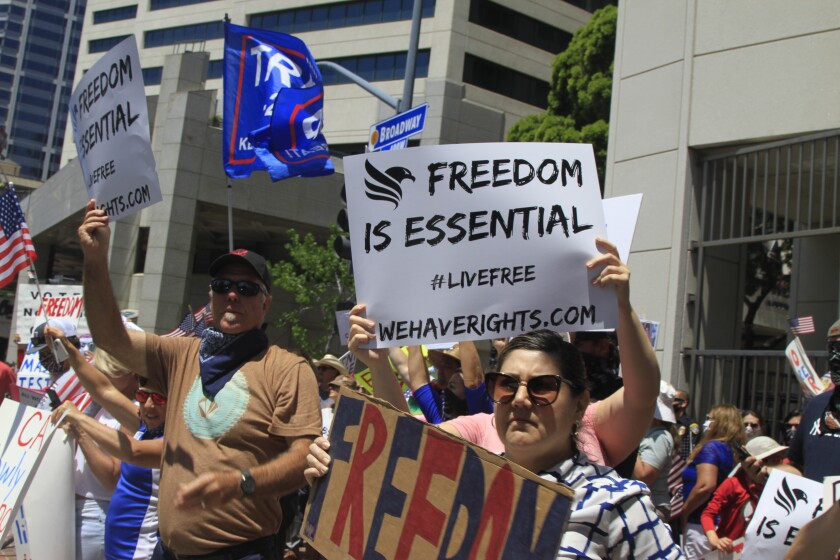
Anti-lockdown protesters rally in downtown San Diego on May 1, 2020, calling on state and local officials to fully reopen the economy. Many in attendance waved branded signs provided by a new group called We Have Rights.
(Joshua Emerson Smith / The San Diego Union-Tribune)
Anti-lockdown protests have simultaneously erupted all over California using the website wehaverights.com
By JOSHUA EMERSON SMITH MAY 10, 2020
A group calling itself We Have Rights has recently started organizing large back-to-work protests throughout California, calling on state and local leaders to end social-distancing orders aimed at slowing the spread of the coronavirus.
The group, which popped up in just the last two weeks, has a professional-looking website and growing social media presence, which provide details for upcoming events, instructions for dealing with the media, highly produced Instagram videos, as well as T-shirts and other branded merchandise for sale.
The campaign — which turned out hundreds of anti-lockdown protesters from San Diego to Sacramento starting May 1 and continuing through this weekend — also has had a charismatic front woman with something of a controversial past: 38-year-old Vivienne Nicole Reign.
Reign, who has been living with her husband in a $3 million home in Newport Beach, according to legal documents, is currently embroiled in legal challenges concerning several neuropathy treatment clinics she owns and operates with a chiropractor. The defendants have maintained their innocence, denying claims brought by former clients of medical negligence, financial elder abuse and fraud.
The Orange County-based entrepreneur recently told The San Diego Union-Tribune in a lengthy phone interview Thursday that she created the website wehaverights.com after having to layoff members of her staff as a result of the pandemic lockdown.
“I’ve had to let go of people that have worked with me for 10 years, and it happened overnight,” she said. “I’ll find a way to make it through this, but there are people who depend on me, and I feel a great sense of responsibility to provide them a paycheck.”
Reign did not cite political reasons as the driving force behind the campaign, however the rallies have overtly promoted President Donald Trump and conservative talking points.
Reign said the campaign has a wealthy backer but would not identify the person.
“Yes, we do have people who have contributed and we do have a benefactor who has contributed, and my husband and I have put money out of our own pocket,” she said.
The New York Times has reported that many of the anti-lockdown protests happening throughout the country are being bankrolled by wealthy conservative leaders and groups, including FreedomWorks and Tea Party Patriots.
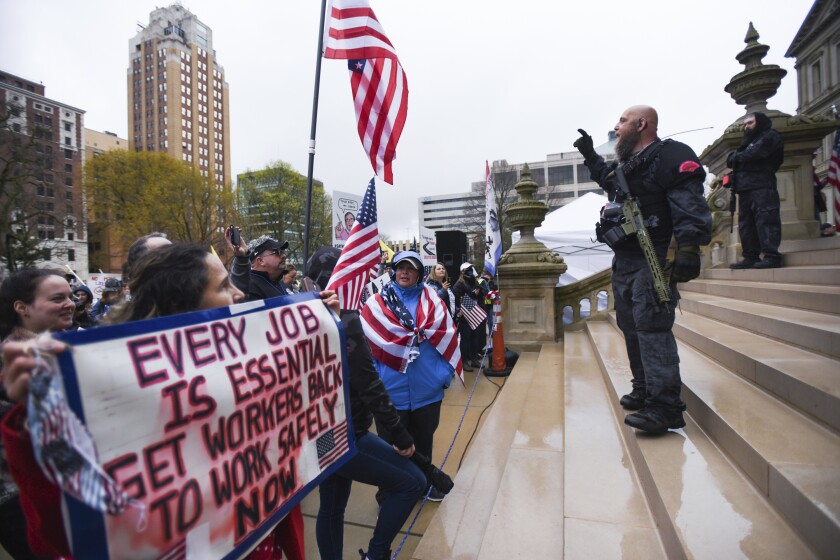
Members of the Michigan Liberty Militia, including Phil Robinson, right, join protesters at a rally at the state Capitol in Lansing, Mich., Thursday, April 30, 2020.
(Matthew Dae Smith / Lansing State Journal)
However, Reign’s campaign stands out compared to similar efforts in other parts of the country, said Jared Holt, an investigator with the Washington, D.C.-based nonprofit Right Wing Watch.
“If something like this is happening in other states,” he said, “it’s certainly not as slick and well-produced as it seems to be in California where this shadowy source of money is coming in with a very branded effort.”
In something of a twist, Reign sent an email to the Union-Tribune on Friday, a day after her interview, saying that she had decided to donate the website and social-media accounts to a unnamed nonprofit.
“I will let them decide when they would like to announce who they are,” she said in the email.
“We are happy to have contributed to helping all of the grassroots groups organize and get their message of preserving and protecting our rights out across California,” she added. “We have confidence the group we are handing it over to will do wonderfully at continuing the efforts even better than we did!”
Reign’s recent organizing efforts don’t appear to be directly connected to those of San Diego resident Naomi Israel Soria, who promoted similar rallies on Facebook.
The 27-year-old Soria is facing misdemeanor criminal charges, including up to six months in jail, for putting together protests in San Diego that law enforcement officials have said violated county public health orders around social distancing. She’s being represented by the high-profile conservative attorney Harmeet Dhillon, who has filed multiple lawsuits against the state of California over its stay-home orders.
Who is Thomas Paine?
Until recently, Dan Summers had never heard of We Have Rights or Vivienne Reign.
Summers, a 70-year-old resident of Ramona, has long been plugged in to conservative politics and activism in the San Diego region. He’s served on the Republican Party’s local central committee and currently heads up an umbrella group called The Circle, which coordinates efforts between prominent conservative and libertarian groups throughout the region.
So it didn’t surprise Summers when an organizer from We Have Rights contacted him out of the blue looking for his help, and his access to mailing lists of about 6,000 people across the region, to boost turnout at a rally that was planned for May 1 in downtown San Diego. The group was also organizing events for that day in Huntington Beach, Los Angeles and Sacramento.
“I got a phone call from the guy who organized these four rallies who wanted to know if I could help him in San Diego, and I said, ‘Yes, I can,’” Summers recently told the Union-Tribune.
The group’s representative called himself “Thomas Paine,” Summers explained, noting that this was also the name of the famous American revolutionary.
“They’ve got a very good website,” he added.
The website’s homepage urges: “Be part of the biggest movement in California.” It demands the ability to worship at church, earn a living and assemble freely at sporting events, conferences and other gatherings.
“The elderly, sick, and high risk are encouraged to quarantine while the healthy and the able have a right to live their lives,” the website states.

Protests gathered on May 1, 2020 in downtown San Diego demanding local and state officials fully reopen the economy despite the ongoing coronavirus pandemic.
(Joshua Emerson Smith / The San Diego Union-Tribune)
The group, which popped up in just the last two weeks, has a professional-looking website and growing social media presence, which provide details for upcoming events, instructions for dealing with the media, highly produced Instagram videos, as well as T-shirts and other branded merchandise for sale.
The campaign — which turned out hundreds of anti-lockdown protesters from San Diego to Sacramento starting May 1 and continuing through this weekend — also has had a charismatic front woman with something of a controversial past: 38-year-old Vivienne Nicole Reign.
Reign, who has been living with her husband in a $3 million home in Newport Beach, according to legal documents, is currently embroiled in legal challenges concerning several neuropathy treatment clinics she owns and operates with a chiropractor. The defendants have maintained their innocence, denying claims brought by former clients of medical negligence, financial elder abuse and fraud.
The Orange County-based entrepreneur recently told The San Diego Union-Tribune in a lengthy phone interview Thursday that she created the website wehaverights.com after having to layoff members of her staff as a result of the pandemic lockdown.
“I’ve had to let go of people that have worked with me for 10 years, and it happened overnight,” she said. “I’ll find a way to make it through this, but there are people who depend on me, and I feel a great sense of responsibility to provide them a paycheck.”
Reign did not cite political reasons as the driving force behind the campaign, however the rallies have overtly promoted President Donald Trump and conservative talking points.
Reign said the campaign has a wealthy backer but would not identify the person.
“Yes, we do have people who have contributed and we do have a benefactor who has contributed, and my husband and I have put money out of our own pocket,” she said.
The New York Times has reported that many of the anti-lockdown protests happening throughout the country are being bankrolled by wealthy conservative leaders and groups, including FreedomWorks and Tea Party Patriots.

Members of the Michigan Liberty Militia, including Phil Robinson, right, join protesters at a rally at the state Capitol in Lansing, Mich., Thursday, April 30, 2020.
(Matthew Dae Smith / Lansing State Journal)
However, Reign’s campaign stands out compared to similar efforts in other parts of the country, said Jared Holt, an investigator with the Washington, D.C.-based nonprofit Right Wing Watch.
“If something like this is happening in other states,” he said, “it’s certainly not as slick and well-produced as it seems to be in California where this shadowy source of money is coming in with a very branded effort.”
In something of a twist, Reign sent an email to the Union-Tribune on Friday, a day after her interview, saying that she had decided to donate the website and social-media accounts to a unnamed nonprofit.
“I will let them decide when they would like to announce who they are,” she said in the email.
“We are happy to have contributed to helping all of the grassroots groups organize and get their message of preserving and protecting our rights out across California,” she added. “We have confidence the group we are handing it over to will do wonderfully at continuing the efforts even better than we did!”
Reign’s recent organizing efforts don’t appear to be directly connected to those of San Diego resident Naomi Israel Soria, who promoted similar rallies on Facebook.
The 27-year-old Soria is facing misdemeanor criminal charges, including up to six months in jail, for putting together protests in San Diego that law enforcement officials have said violated county public health orders around social distancing. She’s being represented by the high-profile conservative attorney Harmeet Dhillon, who has filed multiple lawsuits against the state of California over its stay-home orders.
Who is Thomas Paine?
Until recently, Dan Summers had never heard of We Have Rights or Vivienne Reign.
Summers, a 70-year-old resident of Ramona, has long been plugged in to conservative politics and activism in the San Diego region. He’s served on the Republican Party’s local central committee and currently heads up an umbrella group called The Circle, which coordinates efforts between prominent conservative and libertarian groups throughout the region.
So it didn’t surprise Summers when an organizer from We Have Rights contacted him out of the blue looking for his help, and his access to mailing lists of about 6,000 people across the region, to boost turnout at a rally that was planned for May 1 in downtown San Diego. The group was also organizing events for that day in Huntington Beach, Los Angeles and Sacramento.
“I got a phone call from the guy who organized these four rallies who wanted to know if I could help him in San Diego, and I said, ‘Yes, I can,’” Summers recently told the Union-Tribune.
The group’s representative called himself “Thomas Paine,” Summers explained, noting that this was also the name of the famous American revolutionary.
“They’ve got a very good website,” he added.
The website’s homepage urges: “Be part of the biggest movement in California.” It demands the ability to worship at church, earn a living and assemble freely at sporting events, conferences and other gatherings.
“The elderly, sick, and high risk are encouraged to quarantine while the healthy and the able have a right to live their lives,” the website states.

Protests gathered on May 1, 2020 in downtown San Diego demanding local and state officials fully reopen the economy despite the ongoing coronavirus pandemic.
(Joshua Emerson Smith / The San Diego Union-Tribune)
LIKE THE NAZI LABOUR FRONT THIS ARBEIT MACHT FREI REVIVAL UNDERMINES MAYDAY AS A WORKERS DAY OF REVOLT AGAINST CAPITALISM TO ONE OF SUPPLICATION TO RETURN TO WAGE SLAVERY
The back-to-work rally in downtown San Diego ended up drawing hundreds of people, many waving American flags and few wearing face masks. Some flew “Trump 2020" flags and many wore the iconic red hats.
While many protesters cited financial hardship as a reason for coming out, those in attendance also criticized everything from vaccines to Gov. Gavin Newsom to socialism.
Summers addressed the boisterous crowd with a bullhorn, as cars and trucks circled the block honking.
During the event, a person dressed in We Have Rights-branded merchandise passed out dozens of signs, declaring slogans such as “Freedom is essential” and “Open CA now.”
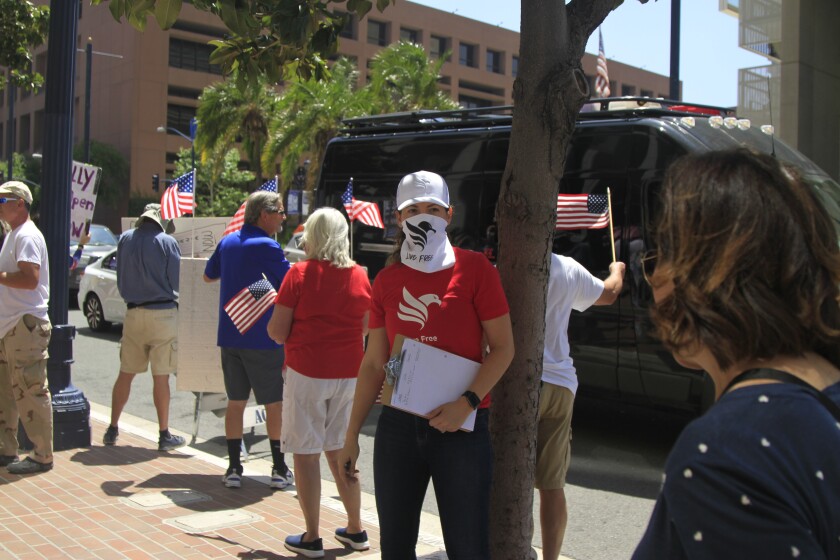
A woman dressed in branded merchandise from the group We Have Rights hands out signs at a rally in downtown San Diego.
(Joshua Emerson Smith / The San Diego Union-Tribune)
Other We Have Rights rallies that day across the state drew even larger crowds, including more than 1,000 people on the capitol steps in Sacramento.
“Over 40,000 Patriots took a stand against the lockdown to demand Newsom fully open California and restore our rights!” the website said of the May 1 actions.
While Summers was pleased with the turnout, he still didn’t know much about Paine. Although, the phone number he used to communicate with Paine traced back to a Thomas Knight Reign, 46, of Newport Beach, according to multiple legal and business records.
Reign, according to his IMDb profile, appeared to be a once-aspiring movie producer and director. Over the years, he started several film-production businesses, including Red Horizon Films LLC, Xposure Entertainment LLC and the still operative Agency X LLC.
However, he has almost no professional or personal online presence that the Union-Tribune could find.
When the Union-Tribune reached out to Reign, he declined to comment and directed all questions to fullyopenca@gmail.com, which used the display name Thomas Paine.
According to court records, Thomas Reign and Vivienne Reign were married in 2011 — although at the time their legal names were Thomas John Wozny and Nicole Melanie Anderson.
She adopted the last name Wozny, but then in 2018, they both legally changed their monikers to Reign.
Vivienne Reign said her husband changed his last name as part of his writing business, and at that point she, too, decided to change both her first and last names. She would not elaborate on what her husband does for work, other than to say he’s a “surfer” and “creative artist.”
“I thought Vivienne was just a pretty name,” she explained. “I thought it was a little timeless, and so I left Nicole as my middle name.
“I go by Viv now, unless it’s my father, and then it’s still Niki,” she added.
From entrepreneur to activist
Vivienne Reign grew up Nicole Melanie Ackermann in the Orange County city of Cypress. She said her mother still lives in her childhood home and her father lives in Redondo Beach.
Her parents were in the aerospace industry and worked hard to give her an education at a private high school, she said. That’s where, at 16, she met her first husband, Darren Anderson.
Anderson, who lives in Mission Viejo, said he and Reign have remained good friends over the years.
“She’s great,” he said. “She’s a hard charger. She’s highly ethical. She’s one of the people in my life that I respect the most.
After graduating high school in 1999, Reign started classes at Fresno City College. However, she said she quickly dropped out to work full time and eventually start her own business.
“I did attend college for a short time, but to be honest, the entrepreneurial bug kept getting at me,” she said.
She said that before joining We Have Rights, she had never been an activist or even attended a protest. In 2016, she donated $250 to help Rand Paul’s presidential run.
Today, Reign has at least eight active companies operating under 17 different business names. Her companies largely focus on medical procedures not covered by health insurance, from stem cell injections to treatments for neuropathy.
Most notably, she owns a company with Orange County chiropractor Philip Straw called Neuropathy Solutions, which has been the subject of at least one patient lawsuit alleging fraud and financial elder abuse.
Reign and Straw have worked together for years, including with his previous business Optimal Health Straw Chiropractic, which has been the subject of about a half-dozen similar lawsuits. Straw was cited by the Board of Chiropractic Examiners in 2012 for falsely portraying himself as a neuropathy expert and advertising his services in a potentially deceptive way.
The businesses have also been bombarded by angry online reviews and drawn the attention of the local media.
The company’s clinics currently go by the name Superior Health Centers, with locations in Corona, Gardena, Glendale and Placentia.
According to court records, Reign is in charge of handling front-office staffing and other administrative tasks, including organizing free dinners used to market the company’s neuropathy treatments to seniors.
Senior citizens Harvey and Donna Stone attended one of those dinners in 2016 where the married couple watched a presentation on peripheral neuropathy, a type of nerve damage that can cause weakness and numbness in hands and feet.
They were told at the dinner that if the condition was not properly treated, it could lead to gangrene and amputation, according to an ongoing lawsuit brought by the couple. When they followed-up with a free medical evaluation at one of the company’s clinics, they were told they both had the condition.
To pay for the treatment, which wasn’t covered by their insurance, they agreed to take out a line of credit and make monthly payments at nearly 15 percent interest for a final sum of $18,655, according to the complaint.
The plaintiffs’ lawyers have argued that the staff at the businesses were not trained or licensed to treat peripheral neuropathy and deceived the couple into thinking otherwise. The treatments included massages and exposure to light and electrical stimulation.
At one point, Harvey Stone was badly burned when staff used administered electrical shocks to his legs using a device dubbed the “HAKO-MED,” according to the lawsuit.
“It’s like the old West salesman setting up shop in a town and selling bottles of snake oil,” said Arnold Gross, senior trial attorney with State Law Firm, who is handling the couple’s case. “This is not a recognized treatment.”
After the Stones took out the high-interest loan, Donna’s primary care physician told her that she didn’t have neuropathy, Gross said.
Lawyer for the defendants Christopher R. Clark declined to comment on the ongoing litigation, other than to say in an email: “We are looking forward to prevailing in this case at trial on behalf of our client.”
According to the defense’s court filings, Harvey Stone received more than two dozen electro-stimulation treatments from the business, and he had acknowledged that “progress was being made and his symptoms were improving.”
Reign also wouldn’t talk about the lawsuit in detail, but said of the court battle: “Unfortunately, it is part of business in today’s age that those things do occur.”
Reign, who traveled to Sacramento for a big rally on May 1, said as recently as Thursday that she planned to focus her efforts on reopening the economy.
However, she has now changed her mind, according to the email she sent the Union-Tribune on Friday.
“I have enjoyed my time working on this, and I feel we made great strides in a short time,” she wrote. “However, as I mentioned, I have many demands on my time with various business investments and wanted to pass this to people who have this as a full time passion and can do the movement justice.”
Staff researcher Merrie Monteagudo contributed to this report.

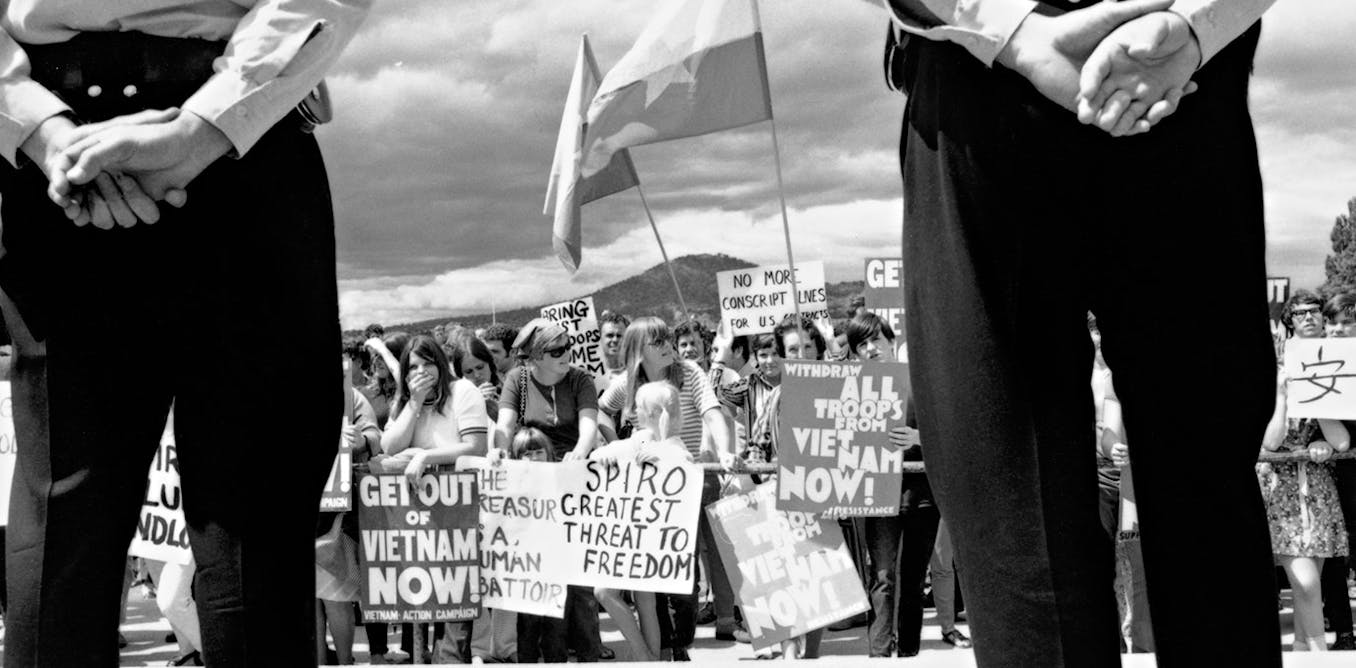
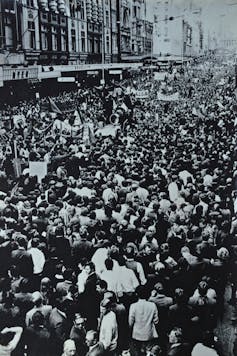








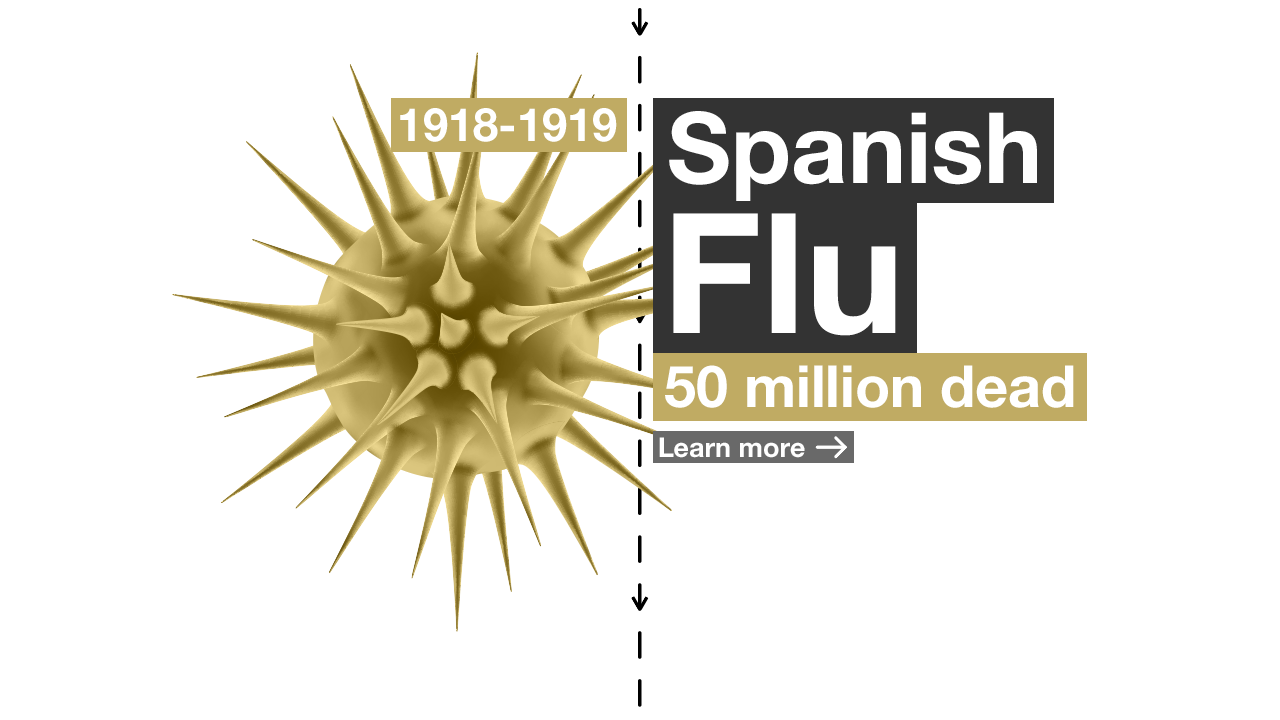

/cdn.vox-cdn.com/uploads/chorus_image/image/66779050/GettyImages_1212168407.0.jpg)
:no_upscale()/cdn.vox-cdn.com/uploads/chorus_asset/file/19948439/GettyImages_1220243530.jpg)
:no_upscale()/cdn.vox-cdn.com/uploads/chorus_asset/file/19954426/GettyImages_1210776136.jpg)
:no_upscale()/cdn.vox-cdn.com/uploads/chorus_asset/file/19954416/GettyImages_1217210567.jpg)
:no_upscale()/cdn.vox-cdn.com/uploads/chorus_asset/file/19954442/GettyImages_1210025771.jpg)
:no_upscale()/cdn.vox-cdn.com/uploads/chorus_asset/file/19948449/GettyImages_1210072417.jpg)
:no_upscale()/cdn.vox-cdn.com/uploads/chorus_asset/file/19948456/GettyImages_1222093363.jpg)
:no_upscale()/cdn.vox-cdn.com/uploads/chorus_asset/file/19948517/GettyImages_1209890190.jpg)
:no_upscale()/cdn.vox-cdn.com/uploads/chorus_asset/file/19948493/GettyImages_1209563214.jpg)
:no_upscale()/cdn.vox-cdn.com/uploads/chorus_asset/file/19948476/GettyImages_1221648310.jpg)

